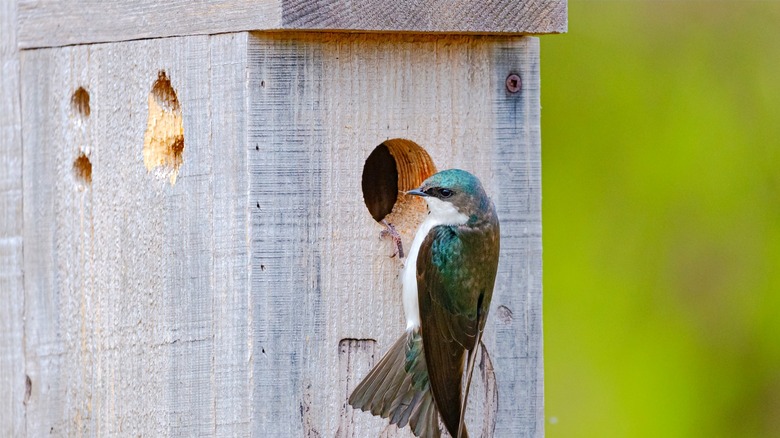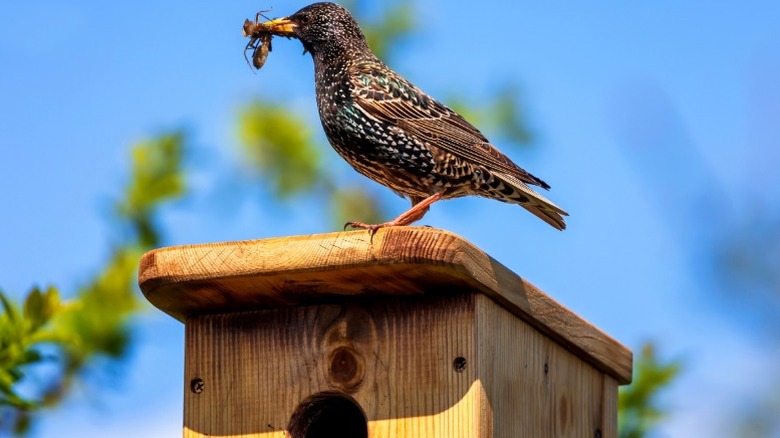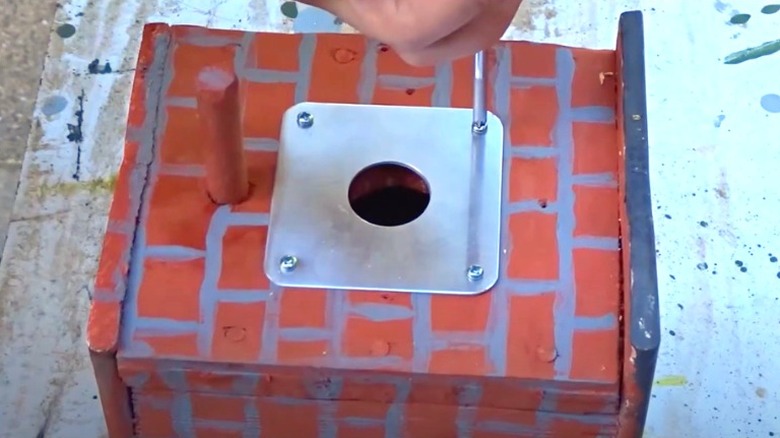The Reason Birds Aren't Nesting In Your Birdhouse Is This Classic Mistake
We may receive a commission on purchases made from links.
A bevy of beautiful birds is a delightful finishing touch for a vibrant garden and one that doesn't come easily. While it's simple enough to toss a birdhouse on a tree and wait, our feathered friends can be pretty particular about where they'll settle in. If it doesn't meet their specifications to keep them safe from predators, close to food, and comfortable while raising their young, it's a no-go. So many details go into it too, from the drainage and ventilation to the size of the entrance, a common oversight that's enough to keep birds from nesting in your birdhouse by itself.
The best hole size for a birdhouse depends on the birds that might use it. Assess the birds in your area, deciding which ones you want to invite into the yard. About 30 to 40 of North America's cavity-dwelling birds enjoy birdhouses, including bluebirds, wrens, and chickadees, a common bird that can help you bid farewell to garden pests. Each has a unique standard for their birdhouse hole. Make it too small, and they can't enter, or they encounter a tight squeeze that can wear on their adult feathers. Leave it too large, though, and you'll invite predators and invasive species. Once you know the bird varieties you can and should bring to your yard, you can find sizing charts online. Charts often lay out every spec that matters, like birdhouse dimensions, yard placement, height above the ground, and, of course, entry hole size.
Why fine-tuning the size matters for a proper birdhouse hole
A poorly sized hole is one of the top reasons birds are avoiding your birdhouse because it's inconvenient and dangerous. Many of us know the trouble squirrels can cause around baths and feeders. They'll also invade nesting boxes in search of eggs or even baby birds. Fortunately, there are several ways to keep these flightless pests out, including making the birdhouse hole no more than 1 ½ inches wide. But after dealing with them, you have to worry about the more aggressive birds you don't want to see in your yard.
Two common invasive birds that take over birdhouses are starlings and house sparrows. Both widespread across North America, these species invade nests, destroy eggs, and even kill resident songbirds. The birdhouse hole must be small enough to exclude them whenever possible so the more desired residents feel safe. For keeping starlings out, that means making the hole no more than 1 9/16 inches wide. House sparrows, on the other hand, can get through holes as small as 1 ⅛ inches. At that size, only a selection of chickadees, nuthatches, wrens, and other small birds can use the house.
An entrance hole 1 ½ inches wide is a good general hole size that will let in bluebirds and many other desirable species while excluding starlings. To manage house sparrows, the most you may be able to do is plug the entry hole until the nesting season begins for birds you're trying to attract. Some also suggest using slot or oval holes, as these are more of a deterrent than round holes.
Tips to fix a birdhouse hole so birds will start using it
An improper birdhouse hole can occur for all kinds of reasons. Maybe you overlooked the hole size when making your DIY nesting box, or perhaps you got a pre-made birdhouse from the store without thinking about it. In other cases, a woodpecker, squirrel, or invasive sparrow might peck or claw at it and open it up further. Whatever the case, it's easy to correct the hole size so your birdhouse will attract the birds you want.
A straightforward and quick fix to bring an old birdhouse back to life is to add a cover plate with the correct hole size. You can buy a set such as these Hotop Birdhouse Guards sized to suit the species you want to bring to the garden. Crafting some yourself is also easy enough for most DIYers. An aluminum sheet or piece of plywood will do, provided it's untreated and unfinished to be on the safe side. Cut a small square piece large enough for you to screw over the existing hole. Using a forstner bit or hole saw, make a fresh hole in the center of the cover. Give the hole a quick sanding to soften the sharp edges and smooth the surface. Put the cover over the existing birdhouse hole, lining the bottom of the new hole flush with the bottom of the old hole. Install it with construction screws, and your birds will be all set to enjoy their nesting box once more!


